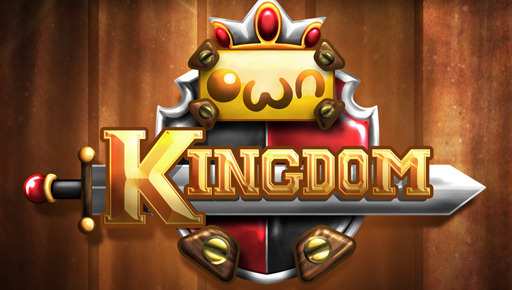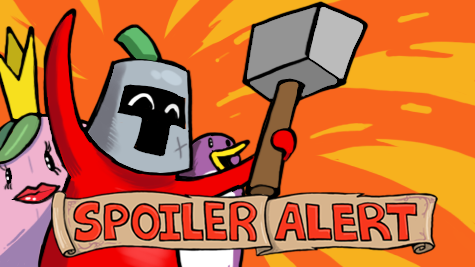In July 2011, Eldwin Viriya took a leave of his job as a lecturer of basic algorithm and data structure for a semester to take a GRE test for the master’s degree. Having passed it successfully, Eldwin discovered he had a lot of free time. He decided to use this time for self-development and made DragManArds in 1.5 months. This Flash game really sparks the light of game development spirit in its author. Later, his company, Own Games, created DragManArds’ remake Own Kingdom, a fantasy medieval strategy game where you need to protect the kingdom from waves of monsters. He describes it as an experience of tower defense games with a taste of war games.
Get the Taste of Making Games
When I first created DragManArds, I used MochiAds for monetization, since that was the only monetization option that I knew at that time. I didn’t even know about Flash sponsorship back then! The result turned out interesting: I got a lot of feedback from real players in Kongregate, some fan messages and suggestions, and also managed to earn more than 200 USD in the first month (which was cut down to only a quarter in the following month, and to almost nothing for the rest of the month).
It felt amazing to actually experience the thrill of launching a game, but the best part was when DragManArds dragged me into the gaming ecosystem of Indonesia. Groups such as Gamedevid allowed me to get to know game developers of the country, as well as big companies like Blackberry and Nokia.

Remake DragManArds: More Features, Better Graphics
In late 2011, Nokia held a game developer competition for their feature phone platform. I asked Jefvin Viriya, my brother (who was still in high school) to help me make the game in time. Having submitted a mini game named Beyond the Well, we came out as the third winner in the competition, and since then, we continue developing games together under the name of Own Games.
We started attending local gamedev events here in Indonesia, one of which was Game Developer Gathering. After this gathering, Kris Antoni from Toge Productions invited me to a meeting with Mochi Media. I got a chance to show DragManArds to their representative and received good feedback about the game. He said he was interested in being contacted again if there’s any sequel to the DragManArds. This meeting made me believe that my game has a lot of potential within.
At that time, working on a new Flash game would have been really hard for us. Firstly, Own Games already had a good amount of players from Nokia Store, and we want to keep them happy with our creations. Moreover, I was also busy with my day job as a lecturer, and my brother got overwhelmed with his high school final exams (not to mention that he didn’t understand ActionScript at all). So we continued our life as usual after that time.
A few months later, Nokia launched Lumia, a Windows Phone smartphone. Until this day, Own Games was focusing on feature phones only. We were working in native J2ME and were not really familiar with modern game engines. Then I noticed that one of my juniors had graduated from the bachelor program, and I invited him to work together in Own Games. The first thing he did in the company was port DragManArds to Lumia. The results turned out great: DragManArds got a gold medal in the Lumia Apps Olympiad in December 2012.

Then I finally decided to quit my job to completely focus on Own Games. On April 1, 2013, Own Games transformed into an official company. Agustian, a 2D artist, also started to help us out. It was really a big move for us: before he joined, we were short on manpower and, what is more, he had a degree in arts and experience in making games. The first objective became clear: remake DragManArds with more features and better graphics.
Learning From Mistakes and Feedback
DragManArds already has a lot of versions: Flash, Windows Phone, Blackberry 10, and even J2ME. Having received a LOT of feedback, we planned a lot of stuff that we wanted to implement in the remake. It turned out to be a lot of tasks. But as Agustian is a talented artist with experience in game industry, I could fully dedicate myself to improving the gameplay and user experience, and our programmer had proven himself successful in making the Windows Phone and Blackberry version of DragManArds, we believed we’ll make it.

I was too optimistic back then, and set the deadline to 3-4 months (DragManArds was made in 1.5 month by me alone, right?). But we weren’t able to finish everything in that time. As any new startup, we faced many challenges, both technical and not. I often argued with Agustian about how he used a lot of time to draw some tiny details that cannot even be clearly seen in the final game. Meanwhile, our programmer had to work remotely from another city because his father had a serious illness. In the end, he realized that he didn’t have enough time to develop anything and left Own Games. So we lost our programmer, our art assets production took more time than planned, and my entrepreneur’s soul was still on a very early development stage. I used to get a salary each month, now I had to pay salaries each month – It feels totally hard in the beginning even though you are already aware of the risk.
A few months after our programmer left the team, we met Ray Naldo, a former junior in the university where I worked. But we didn’t want to give him the pressure of developing a game as big as Own Kingdom for his first time. So we decide to make Eyes on Dragon, a 3D endless runner. During its development, we also got some help on 2D art assets from Okky, Agustian’s junior.

Meanwhile, Jefvin was learning C++ and tried to make Own Kingdom for Windows Phone 8 using Cocos 2dx. The WP8 version eventually became the finalist of the Indonesia Game Show. During our presentation at the competition, the judges called Own Kingdom’s gameplay a unique and promising one, but pointed out that the program was crashing and the buttons weren’t working smoothly. Even though we didn’t win the competition, this encouraged us to go on with Own Kingdom. But, sadly, once again, we had to put development for WP8 on hiatus when we realized that Cocos 2dx for WP8 didn’t support mp3 files.
Back to an Abandoned Game
A few more months had passed. Eyes on Dragon was published. We were happy with what we made, and decided to go on with the development of Own Kingdom. Ray started learning Unity 4.3 for 2D, Agustian and Okky made more art assets for the game, and Jefvin and I kept improving the game design, level design, and also the whole gaming experience.
The second development phase was not easy, but definitely better than the first one. Continuing the game that was once abandoned is for sure not an easy task, since most of the courage is gone. What is more, there were two desires we struggled with: to make the game better but, at the same time, finish it as fast as we could. Yeah, that’s shameful. Nevertheless, coming back to Own Kingdom had positive sides, too: we already knew that the game is worthy and that a lot of people wanted to see it completed. What is more, now we had a bigger team and some experience. Eventually, we managed to finish Own Kingdom in April 2014.

The development of Own Kingdom is a long journey, and we realize that it has not ended yet. But we are really happy with the growth of each of us. Agustian has started to become more efficient and effective at allocating his energy to finish the work in time. Ray got a lot of experience in making the game using Unity in both 2D and 3D, which opened the possibilities to reach more platforms. I became more familiar with project management, and got a whole new experience in leadership. But the most valuable thing that makes me really grateful is how Own Kingdom turned Own Games into a more solid and powerful team.

Own Kingdom is available in Windows Phone Store and Nokia Store (Nokia X only), and has recently been launched on Android.










